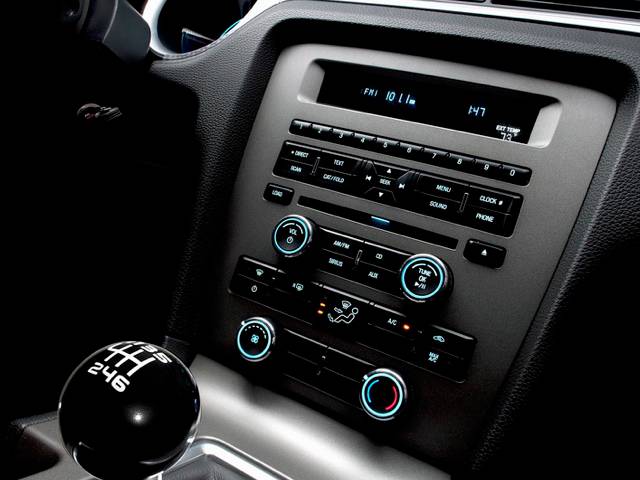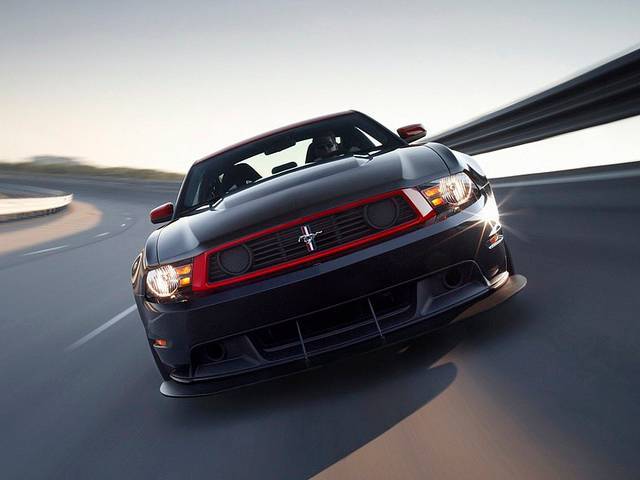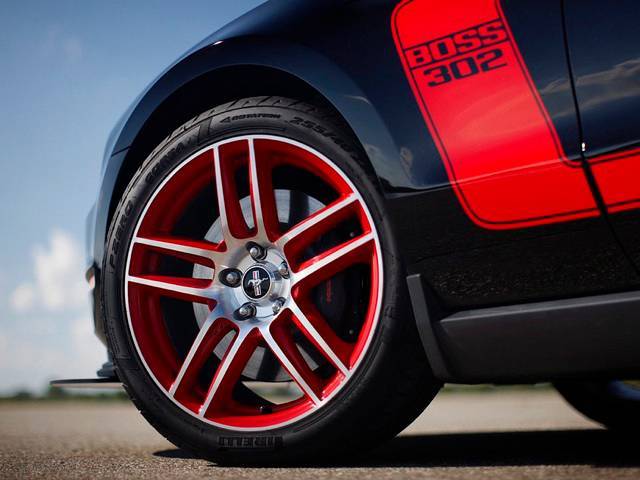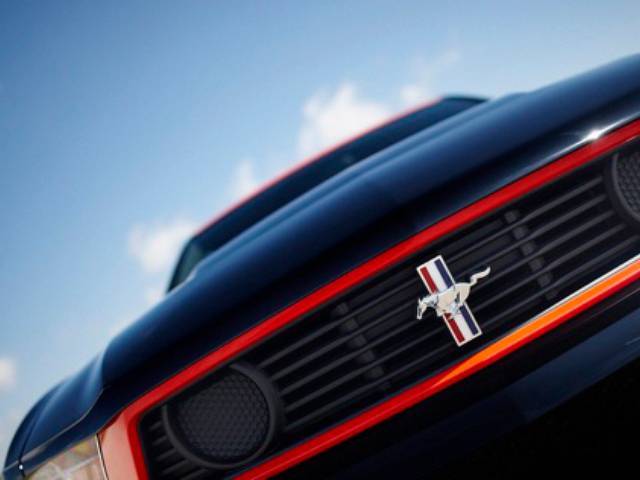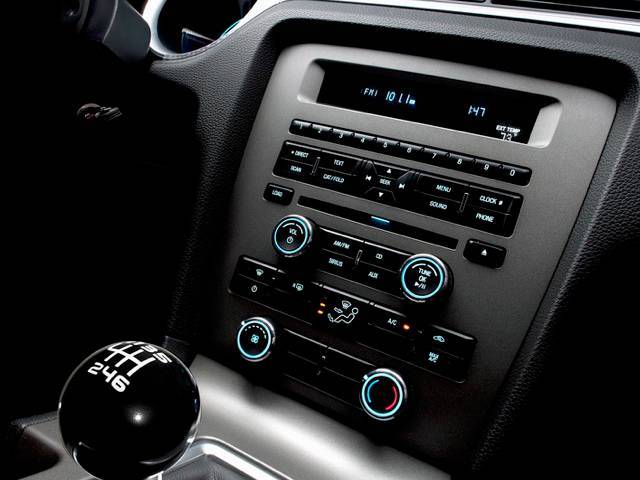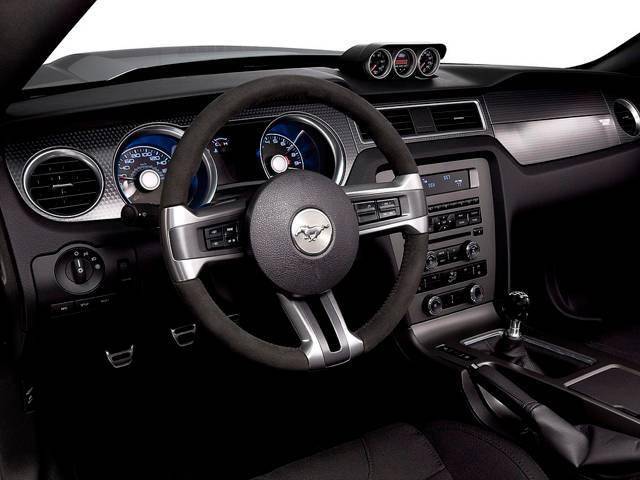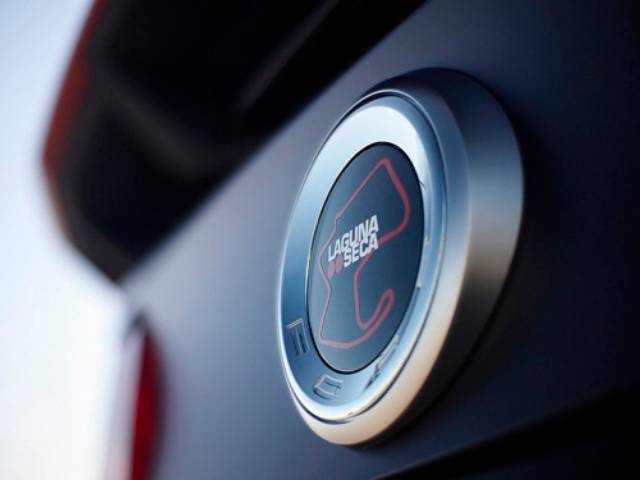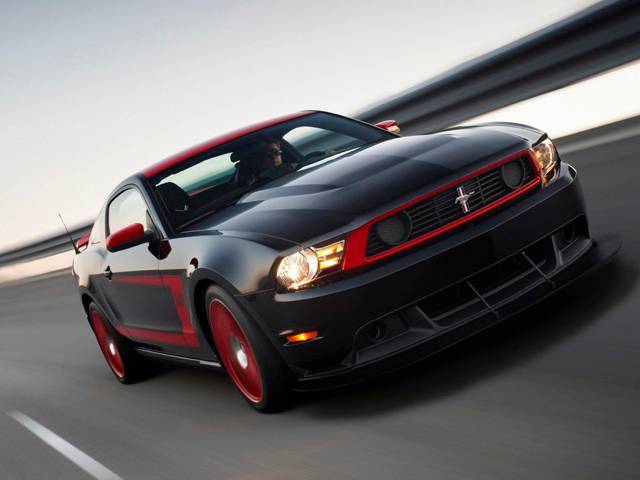Ford gave the green light only once before: In 1968, management approved a special Mustang – a car that sacrificed nothing in its quest to be the best all-around road-going performance machine ever created by Ford Motor Company. That car became the 1969 Mustang Boss 302, and it remains one of the world’s most sought-after examples of American performance.
Forty-two years later, Ford has given the green light again.
The team of Ford engineers, designers and stylists – all Mustang enthusiasts to the core – that created the groundbreaking 2011 Mustang GT has distilled a new model to its purest form, strengthening, lightening and refining each system to create a race car with a license plate. Its name: the 2012 Mustang Boss 302.
To celebrate the racing heritage of the new Mustang Boss 302, Ford will also offer a limited number of Boss 302 Laguna Seca models, named for the track where Parnelli Jones won the 1970 Trans-Am season opener in a Boss 302. Aimed at racers more interested in on-track performance than creature comforts, the Boss 302 Laguna Seca has increased body stiffness, a firmer chassis set-up and an aerodynamics package carried over almost in its entirety from the Ford Racing Boss 302R.
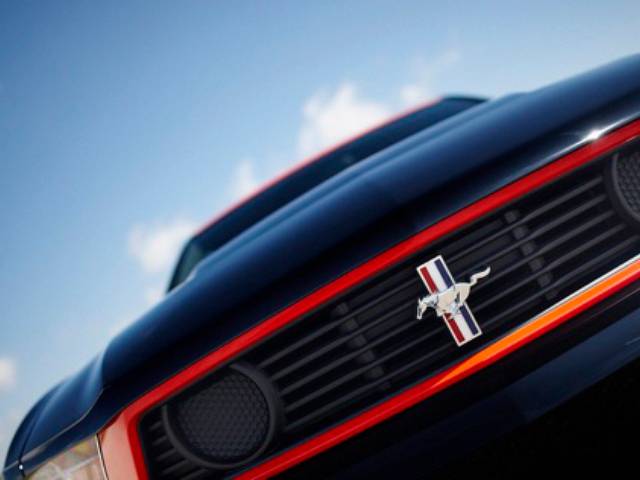
Philosophy and powertrain
“The new Boss 302 completely redefines Mustang capability,” said Mark Fields, Ford president of The Americas. “That the Mustang team was able to take the current Mustang GT – already a world-class performance car – and refine it further for peak track performance shows the commitment Ford has to this car and its legions of fans.”
Driving the 2012 Mustang Boss 302 was intended from the outset to be a visceral experience, packed with raw, unbridled performance across the spectrum: Acceleration, handling, braking, and top speed are all equally matched for perfect balance on a car operating within the framework of legally defined safety, noise and emissions regulations.
“The team at Ford wanted to offer their fellow Mustang enthusiasts something really special – a beautifully balanced factory-built race car that they could drive on the street,” explains Dave Pericak, Mustang chief engineer. “The Boss 302 isn’t something a Mustang GT owner can buy all the parts for out of a catalog or that a tuner can get by adding a chip. This is a front-to-back re-engineered Mustang with every system designed to make a good driver great and a great driver even better.”
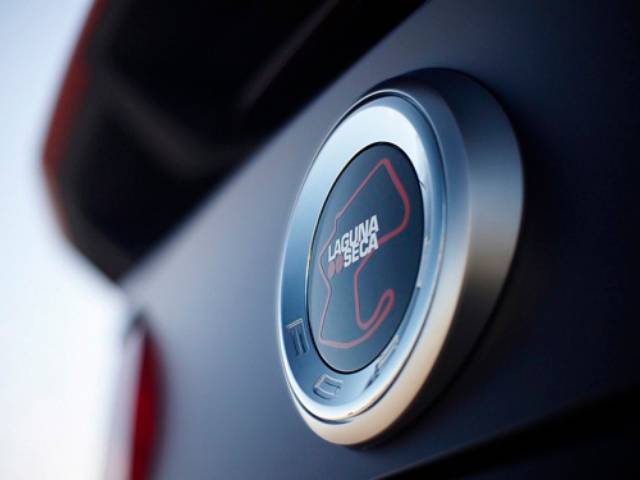
Led by Mike Harrison, the V8 engine team approached Boss from the top down: With 412 horsepower from 5.0 liters, the 2011 GT engine was already an incredible performer. But to achieve the high-rpm horsepower that would make the engine competitive on the track, a new intake was essential. The resulting runners-in-the-box plenum/velocity stack combination the engine team developed was impressive enough that it got the green light after one short drive.
Helping the intake build power, revised camshafts using a more aggressive grind are actuated with the same twin independent variable camshaft timing (Ti-VCT) mechanism used on the Mustang GT. More aggressive control calibration yields 440 horsepower and 380 lb.-ft. of torque, while still offering a smooth idle and low-end torque for comfortable around-town driving.
A race-inspired clutch with upgraded friction materials transmits power, while a short-throw, close-ratio six-speed manual transmission handles gear change duties.
Power is delivered to a 3.73 ratio rear axle using carbon fiber plates in the limited-slip differential to improve torque handling and longevity. For those who want even more precise control over power delivery, a torque-sensing (Torsen) limited-slip differential is an available option coupled with Recaro front seats.
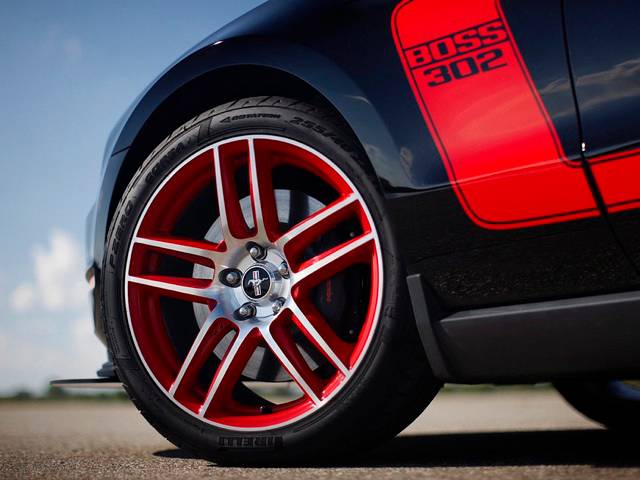
Sounds like the Boss
While the powertrain team defined output targets that would yield an ideal balance with the chassis, another team made sure the car made the kind of sounds owners and enthusiasts would expect from a Mustang Boss.
Up front, a Boss-specific intake system is tuned to feed the engine with minimum restrictions. A retuned induction sound tube provides concrete aural evidence of what’s occurring under the hood. And, in the Boss exhaust system engineers really had some fun.
“With an exhaust system, we have to consider three constraints: legal noise restrictions; backpressure, which can rob power; and ground clearance,” explains Shawn Carney, Mustang NVH engineer. “Since the 2011 Mustang GT exhaust is already so free-flowing – it came in way under our backpressure targets – we already had excellent performance; we were able to tune the exhaust system for a unique sound. Combined with the rush of the intake, the exhaust system really envelops the driver in V8 sound.
Every Boss features a unique quad exhaust system: Two outlets exit in the rear similar to a standard Mustang GT. The other two outlets exit to either side of the exhaust crossover, sending exhaust through a set of metal discs that act as tuning elements before the pipes terminate just ahead of the rear wheel opening. Visually subtle, the side pipes flow very little exhaust but a lot of exhaust sound, providing a sonic experience unlike any other Mustang – and giving home tuners an additional avenue for modification.
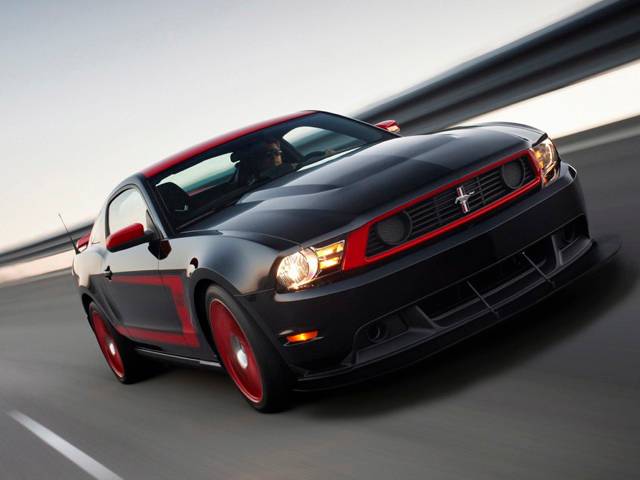
“We added the attenuation discs to meet legal regulations, but we knew buyers might operate these cars in situations where noise regulations weren’t an issue,” Carney said. “The disc is removable and includes a spacer plate sized to match aftermarket exhaust dump valves. If an owner wants to add a set of electric valves, they just undo two bolts on either side; the disc and spacer slide out and the valve will slide right in. And the side pipes are tuned so that drivers can run wide-open and the sound levels are comfortable – very aggressive but livable for an all-day track outing.”
Carney further explains the thinking behind the unusual step of an OEM easing aftermarket component installation. “We’re Ford engineers, but we’re also enthusiasts,” he says. “We understand owner mods are part of the Mustang experience, so we try to help where we can.”
